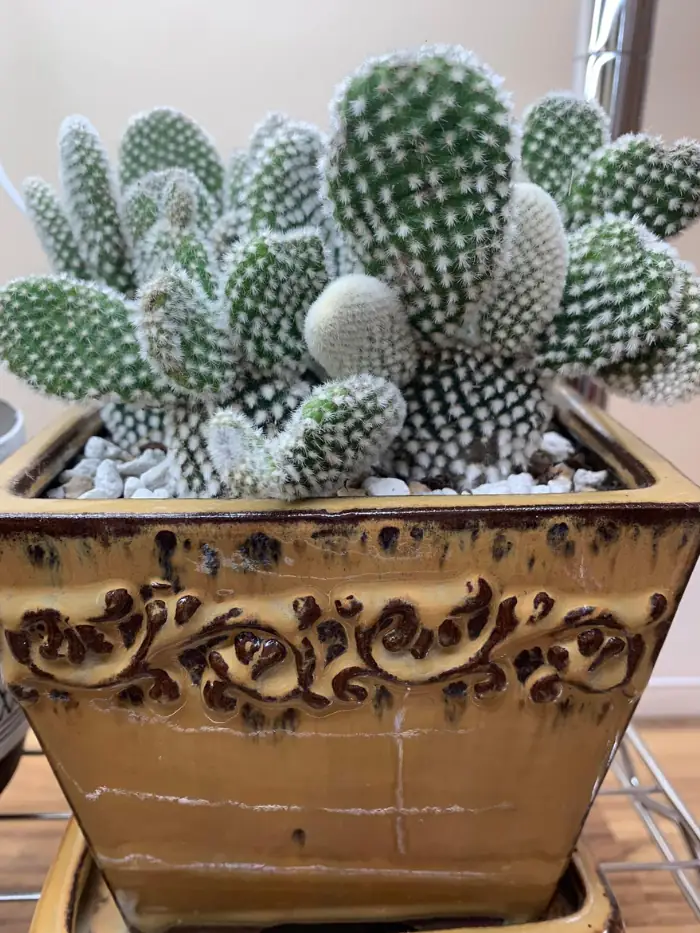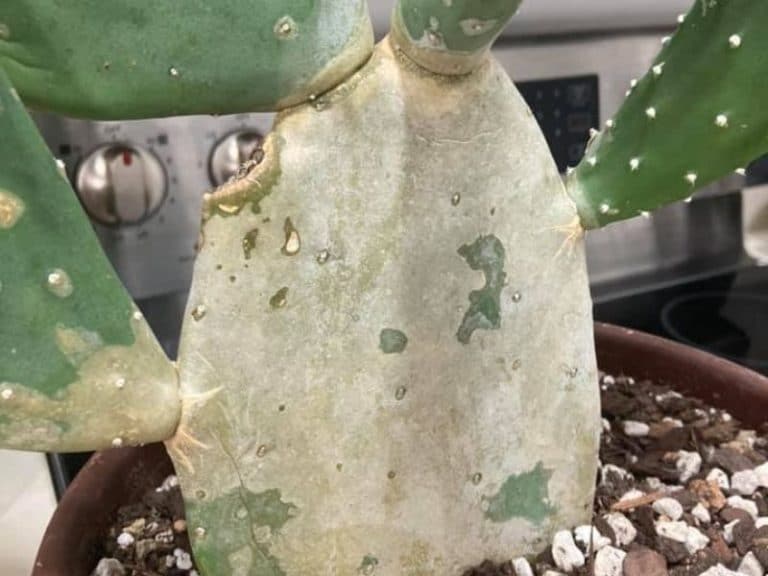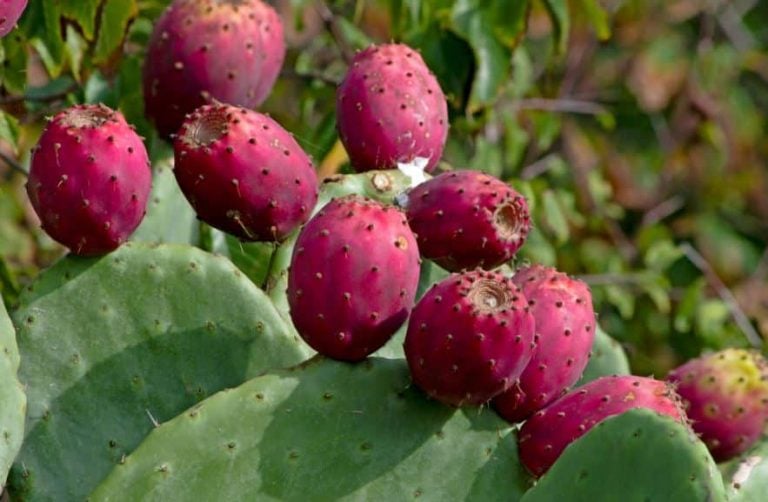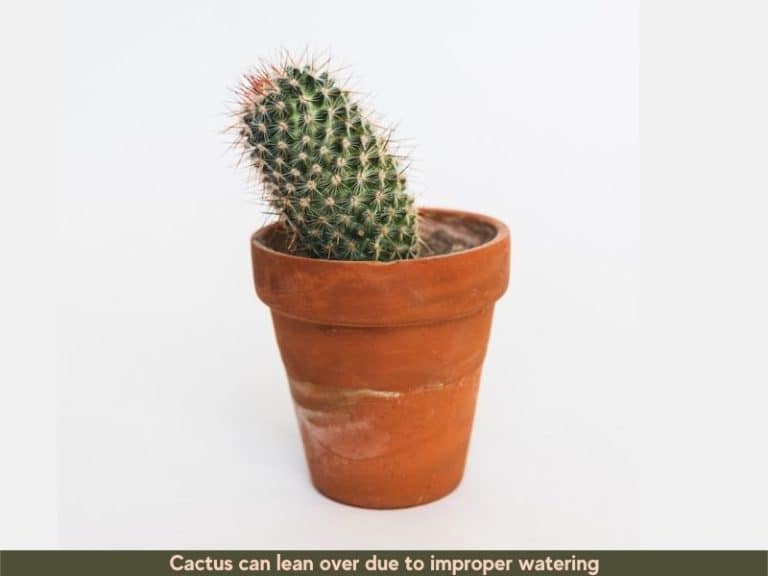How Often to Water Cactus: Best Practices Explained
Like any other succulent plant, cactus plants do not need frequent watering. They have unique features that aid in storing and conserving water for dry seasons. The frequency of watering cactus depends on various factors, but you should have a rough idea of when to give it water.
The rule of thumb is to water your cactus every 10 to 14 days, but only when the soil is completely dry. Cacti generally require less water than other plants because they are adapted to survive in arid environments.
The frequency of watering your cactus depends on the size of the plant, the season, the growing medium, whether potted indoors or outdoors, the climate, and the variety of the cactus.

Cacti plants are easy to care for, but poor watering habits can cause wilting, root rot, or even kill the plant. I advise beginners not to be over-enthusiastic when watering their cacti plants or even underestimate their water needs.
Cactus watering frequency
In the early stages of growth, water your cacti plants at least once a week and give them a good soaking. That’s because cacti need more water at the development stage.
If you’re growing them from seed, The Texas A&M University Extension recommends planting in 4-inch half-pans since they don’t dry out too quickly.
Also, potted cacti need more watering than those growing directly in the ground because of the limiting growing conditions, and their extensive roots cannot grow beyond the walls of the planter.
Pro tip: To determine if the soil is dry, stick your finger about an inch into the soil. If it feels dry to the touch, it’s time to water.
Cacti are tough succulent plants that are native to the desert and, as such, do not require frequent watering. There is no definite timeline for when or how often you should water them. So, only water your cactus plants when the soil is dry up to the roots.
Here are some of the factors that determine how often you should water your cacti:
- Season: when days become longer and warmer, the rate of evapotranspiration increases. So, in such seasons cactus plants need frequent watering.
- Size of the cactus: there is a misconception that large cacti need frequent watering, unlike small ones. However, it is vice versa. The surface area to volume ratio gets smaller as the tree grows, reducing the evaporation rate. So, small cactus plants need more frequent watering to replace the water lost through evapotranspiration.
- Growing medium: Potted cacti need frequent watering, unlike outdoor cactus plants. The extensive roots of an outdoor cactus can draw water from a large area, unlike a potted cactus, whose roots are restricted within the confines of the pot.
- Humidity: cactus growing in medium or high-humidity areas do not need frequent watering like those in low-humidity areas. That’s because, in low humidity, the plant loses water into the air faster through evapotranspiration.
- Temperature: cactus plants lose water at a high rate in high temperatures. So, water them often to replace the lost water.
Observing hydrostatic pressure in cacti
As plant care experts, we don’t always rely on a specific frequency or just wait to see a wilting or wrinkling plant before giving it water. Observing hydrostatic pressure is one of the best ways to determine if the plant needs water.
Understanding hydrostatic tension helps determine if vacuoles (the fluid retaining cells) are low on water or overwatered and bursting, which also causes drooping.
If your cactus is overwatered and appears droopy, and you assume it has low tension, you’ll drown the plant and even kill it.
Note that some plants will deliberately lower their tension during dormancy, and watering would be very bad.
Vacuole eruptions due to increased hydrostatic tension from overwatering often appear localized as in the case of edema. Sometimes, if the eruptions are widespread throughout the plant, your cactus will initially droop and become progressively more translucent.
Such knowledge about hydrostatic pressure is important in knowing if the succulent really needs water or is showing signs of underwatering that look similar to those of overwatering.
Should you water a cactus every day?
Do not water cactus daily, as this will lead to waterlogging, which causes root rot disease. Cactus plants can survive underwatering, but overwatering causes significant damage and can kill the succulent.
How long can you go without watering a cactus?
Cactus are desert plants that can survive without water for up to two years as outdoor plants. However, indoor cacti cannot survive for that long because of the limiting conditions.
Cacti have features that aid in water storage and conservation. During the dry season, the plants use the stored water to survive. Their adaptations include the following:
- Prickly spines: the prickly spines limits airflow around the cactus leaves, thus reducing water loss through evaporation.
- Extensive shallow roots: cacti plants have shallow but far-reaching roots that draw water from a large area. Also, when it rains, the root systems soak up water that the plants use in dry seasons.
- Fleshy stems: the stems’ water retention ability and shape help with water storage. The stems’ cylindrical or spherical shape reduces the surface area to volume ratio, consequently reducing the water evaporation rate. The succulent stems soak up with water and store it for a long time for the plants to use in the dry season.
How to tell your cactus needs water?
Cacti thrive well in dry areas. However, do not underestimate their water needs. The following are some of the signs you can use to tell if your cacti plants are dehydrated:
- Dry soil to the roots: when the soil dries out completely, your cactus plants need water. Use a screwdriver to determine if the soil has completely dried out. A screwdriver will penetrate with difficulty in dry soil, unlike in moist soil.
- Withering: the stems of a fully hydrated cactus are rigid. When the stems start softening, that is a sign of dehydration, meaning that the plant needs water.
- Leaning and falling: Water helps plants maintain their posture, so if your cactus is leaning or bending, it probably needs water.
Can you overwater a cactus?
No, you should not overwater cactus plants. Overwatering leads to waterlogging, which causes root rot disease and, eventually, the death of the plant.
Cacti thrive in well-drained soils and grow in sandy desert soils in their native habitats. Overwatering your cacti is quite disastrous as it is hard to salvage overwatered cacti plants.
If potting your cactus, use a planter with enough draining holes to avoid waterlogging.
What does an overwatered cactus look like?
Overwatering causes root rot disease. An overwatered cactus will have signs of root rot disease. Root rot disease damages the roots, limiting the absorption and transportation of nutrients and water to the other parts of the plant. The signs include:
- Wilting.
- The base of the plant turns black.
- Browning or blackening of the leaves and the stems.
Do you water cacti from the top or bottom?
You can water your cacti either from the top or from the bottom. However, the latter method is preferable for various reasons. Watering cactus plants from the bottom allows for stronger root growth and development as the roots grow downwards towards the moisture.
Moreover, this watering method ensures water reaches the bottom of the pot fast enough and drains out, as cacti struggle in waterlogged soil conditions.
To effectively water your cacti from the bottom, follow the steps detailed below:
- Fill a seeding tray or any other flat surface container with ½ an inch of fresh water.
- Place the planters with the cacti plants in the seeding tray.
- Leave it in the container for 30 minutes or until the soil soaks up and the topsoil is moist.
- Drain out the tray/ container.
- Remove the planter from the tray and place it in its position.
With top watering, you risk underwatering your cactus plants, as not all the water trickles into the soil. This may make your cacti thirsty, especially if they have not been watered for long.
Conclusion
The best time to water cacti is when the soil dries out completely. Don’t let these succulents go too long without water. In the same breadth, don’t water them too often.
Underwatering and overwatering cacti cause issues like root rot and withering. Water your cactus plants from the bottom to encourage deep rooting.





